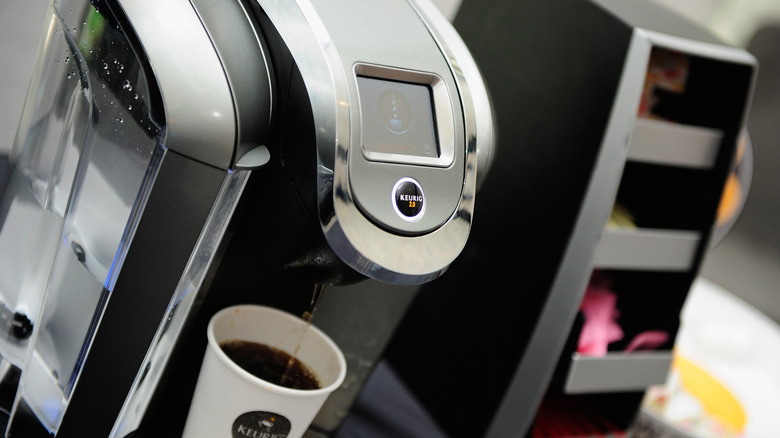Why You May Not Want To Leave Water In Your Keurig Reservoir Overnight
Single-cup coffee makers add speed and convenience to your day, but their design makes them susceptible to a problem you never want to see in your coffee cup: mold. That's right, your Keurig machine is one of the unexpected places where mold may be lurking in your home. The reason is that the water reservoir — the detachable tank that holds the water dispensed into your cup of coffee — can become a breeding ground for mold. The longer you leave water in the reservoir, the greater the odds of a potential mold problem.
Finding mold in the reservoir does not necessarily mean that you should throw your coffee maker away immediately. You can get rid of mold with a common household ingredient that you likely already own. After soaking the reservoir, wiping the machine with water, and drying it thoroughly, you should be able to eradicate the mold problem in your Keurig water tank. Moving forward, always ensure that the reservoir is left empty when it is not in use. Along with regular cleaning, mold won't be able to gain a foothold in your Keurig. We certainly wouldn't wish a mold-infused cup of coffee on anyone.
Stagnant water in your Keurig reservoir can cause mold
It may seem innocuous, but leaving water in your Keurig for longer than a day or two could have undesirable and even harmful consequences. Water that is stagnant, or left to sit in an enclosed space without flowing, allows bacteria to thrive. Mold spores can develop in as little as 24 hours, contaminating the water in the reservoir and, in turn, your morning cup of coffee. The problem only worsens after the Keurig is used, as the water heats up and creates a warm, moist environment that promotes bacterial growth.
Even if you don't see or smell mold, you may still be ingesting it with every sip. Drinking contaminated water can cause flu-like symptoms and long-term health issues down the line. Thankfully, you can avoid this issue altogether by emptying the reservoir after every use and cleaning it regularly with a small amount of mild dish soap and water. Dry it thoroughly before putting it back into place.
If you suspect that there is mold in your Keurig reservoir, the best thing to do is to give it a deep clean. You can get rid of mold using vinegar, a household essential that you likely already have in your kitchen. Unplug the Keurig, remove the reservoir, and soak it in a mixture filled halfway with warm water and distilled white vinegar for 30 minutes. Rinse the reservoir and wipe the rest of the machine with water and a soft cloth. Ensure that all components are dry before reassembling the machine and using it again. For an extra-thorough cleaning, run the water and vinegar mixture through the Keurig two to three times using the brew setting, then run it with just water to rinse.

